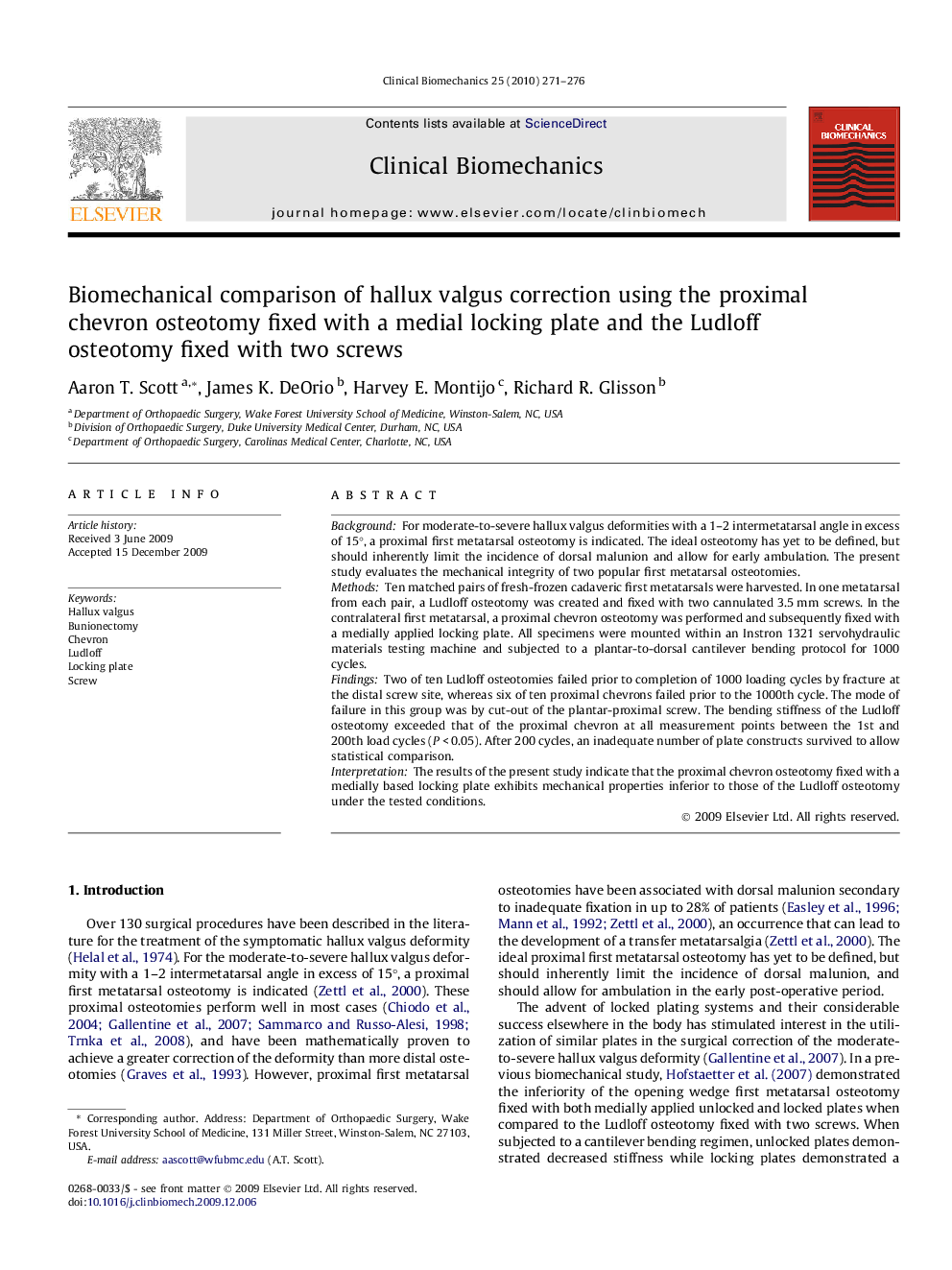| Article ID | Journal | Published Year | Pages | File Type |
|---|---|---|---|---|
| 4051120 | Clinical Biomechanics | 2010 | 6 Pages |
BackgroundFor moderate-to-severe hallux valgus deformities with a 1–2 intermetatarsal angle in excess of 15°, a proximal first metatarsal osteotomy is indicated. The ideal osteotomy has yet to be defined, but should inherently limit the incidence of dorsal malunion and allow for early ambulation. The present study evaluates the mechanical integrity of two popular first metatarsal osteotomies.MethodsTen matched pairs of fresh-frozen cadaveric first metatarsals were harvested. In one metatarsal from each pair, a Ludloff osteotomy was created and fixed with two cannulated 3.5 mm screws. In the contralateral first metatarsal, a proximal chevron osteotomy was performed and subsequently fixed with a medially applied locking plate. All specimens were mounted within an Instron 1321 servohydraulic materials testing machine and subjected to a plantar-to-dorsal cantilever bending protocol for 1000 cycles.FindingsTwo of ten Ludloff osteotomies failed prior to completion of 1000 loading cycles by fracture at the distal screw site, whereas six of ten proximal chevrons failed prior to the 1000th cycle. The mode of failure in this group was by cut-out of the plantar-proximal screw. The bending stiffness of the Ludloff osteotomy exceeded that of the proximal chevron at all measurement points between the 1st and 200th load cycles (P < 0.05). After 200 cycles, an inadequate number of plate constructs survived to allow statistical comparison.InterpretationThe results of the present study indicate that the proximal chevron osteotomy fixed with a medially based locking plate exhibits mechanical properties inferior to those of the Ludloff osteotomy under the tested conditions.
